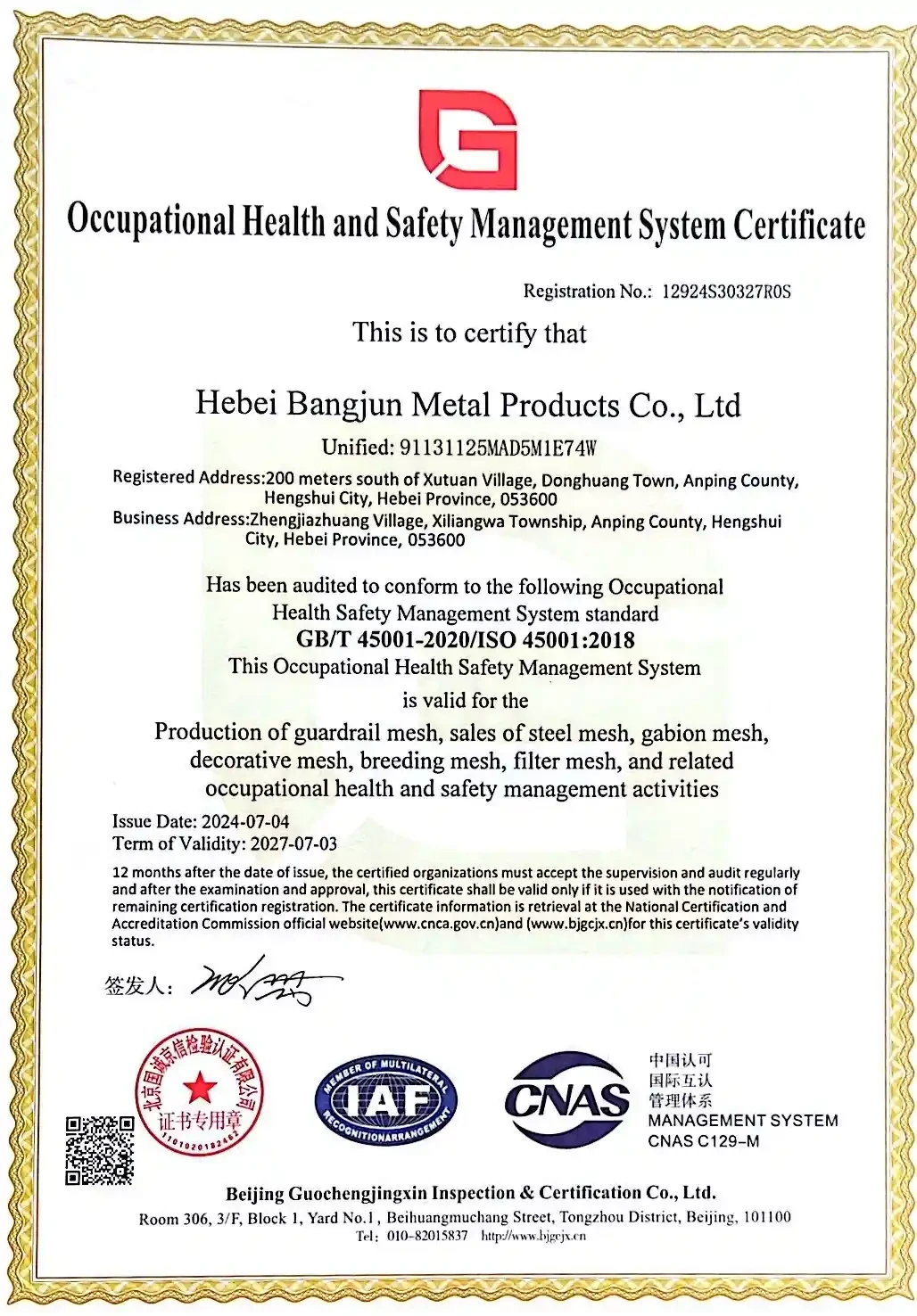Dec . 24, 2024 04:35 Back to list
Understanding the Purpose and Benefits of Reinforcing Mesh in Construction
What is Reinforcing Mesh?
Reinforcing mesh, also commonly referred to as rebar mesh or welded wire mesh, is a critical component in the field of construction and civil engineering. Designed to enhance the structural integrity of concrete, this material plays a vital role in the strength and durability of various building elements. In this article, we will delve into what reinforcing mesh is, its types, applications, benefits, and factors to consider when using it in construction projects.
Understanding Reinforcing Mesh
Reinforcing mesh is typically made from steel wires that are welded together at regular intervals to form a grid-like pattern. This grid structure provides tensile strength to concrete, which is inherently strong in compression but weak in tension. By incorporating reinforcing mesh, engineers can ensure that concrete elements can withstand various stresses and loads without cracking or breaking.
Types of Reinforcing Mesh
There are several types of reinforcing mesh available, each serving specific purposes
1. Welded Wire Mesh This is the most common type, consisting of a network of steel wires that are welded together, typically in squares or rectangles. It is available in various sizes and strengths, depending on the needs of the project.
2. Stainless Steel Mesh Used in environments exposed to corrosive elements, stainless steel mesh offers enhanced resistance to rust and degradation, making it suitable for chemical plants and coastal constructions.
3. Galvanized Mesh This type of reinforcing mesh has a protective zinc coating, providing an extra layer of resistance against corrosion. It is often used in outdoor applications where moisture may be an issue.
4. Fiberglass Mesh While not as common as steel mesh, fiberglass reinforced mesh is utilized in specialty applications where weight reduction is a priority, such as in lightweight concrete structures.
Applications of Reinforcing Mesh
Reinforcing mesh is used in a broad range of construction applications, including
- Foundations It is commonly embedded in the concrete of foundations to provide added support and redistribution of loads.
- Slabs and Pavements In floor slabs, parking lots, and road surfaces, reinforcing mesh helps prevent cracking and increases load-bearing capacity.
- Walls It can be integrated into concrete block walls and precast concrete panels to enhance their stability and durability.
what is reinforcing mesh

- Bridges and Highways In more extensive infrastructure projects, reinforcing mesh ensures that concrete components can handle heavy vehicular traffic and environmental stresses
.Benefits of Using Reinforcing Mesh
1. Enhanced Strength One of the primary advantages of reinforcing mesh is the significant increase in tensile strength it offers to concrete structures.
2. Crack Prevention By distributing stresses more evenly, reinforcing mesh helps prevent cracks in concrete, leading to longer-lasting structures.
3. Cost-Effectiveness Although the initial cost may be higher than standard concrete, the added durability and reduced need for repairs can lead to substantial long-term savings.
4. Ease of Installation Reinforcing mesh is relatively easy to handle and install, speeding up the construction process and efficiency.
Factors to Consider When Using Reinforcing Mesh
When selecting reinforcing mesh for a specific project, several factors should be taken into account
- Load Requirements The anticipated loads and stresses on the structure will dictate the type and thickness of the reinforcing mesh required.
- Environmental Conditions The susceptibility of the building to corrosion, moisture, or chemicals should influence the choice of mesh type, such as opting for galvanized or stainless steel.
- Local Building Codes Compliance with local regulations and construction standards is essential when selecting reinforcing materials.
- Cost While it is important to ensure quality and strength, budget constraints may also impact the choice of reinforcing mesh.
Conclusion
Reinforcing mesh plays an indispensable role in modern construction, providing the necessary strength and durability to various concrete applications. By understanding its types, benefits, and proper usage, builders and engineers can significantly enhance the performance of their structures, ensuring safety, longevity, and efficiency. As construction practices continue to evolve, the importance of materials like reinforcing mesh will remain pivotal in building resilient infrastructures.
-
Reinforcing Mesh: Core Material of the Construction Industry
NewsJul.07,2025
-
Welded Wire Fabric Reinvented for Modern Projects
NewsJul.04,2025
-
Superiority of Stainless Steel Woven Mesh
NewsJul.04,2025
-
Key Types of Razor Wire and Their Applications
NewsJul.04,2025
-
Durable Metal Fence Types for Security
NewsJul.04,2025
-
Best Materials for Livestock Fence
NewsJul.04,2025
products.







